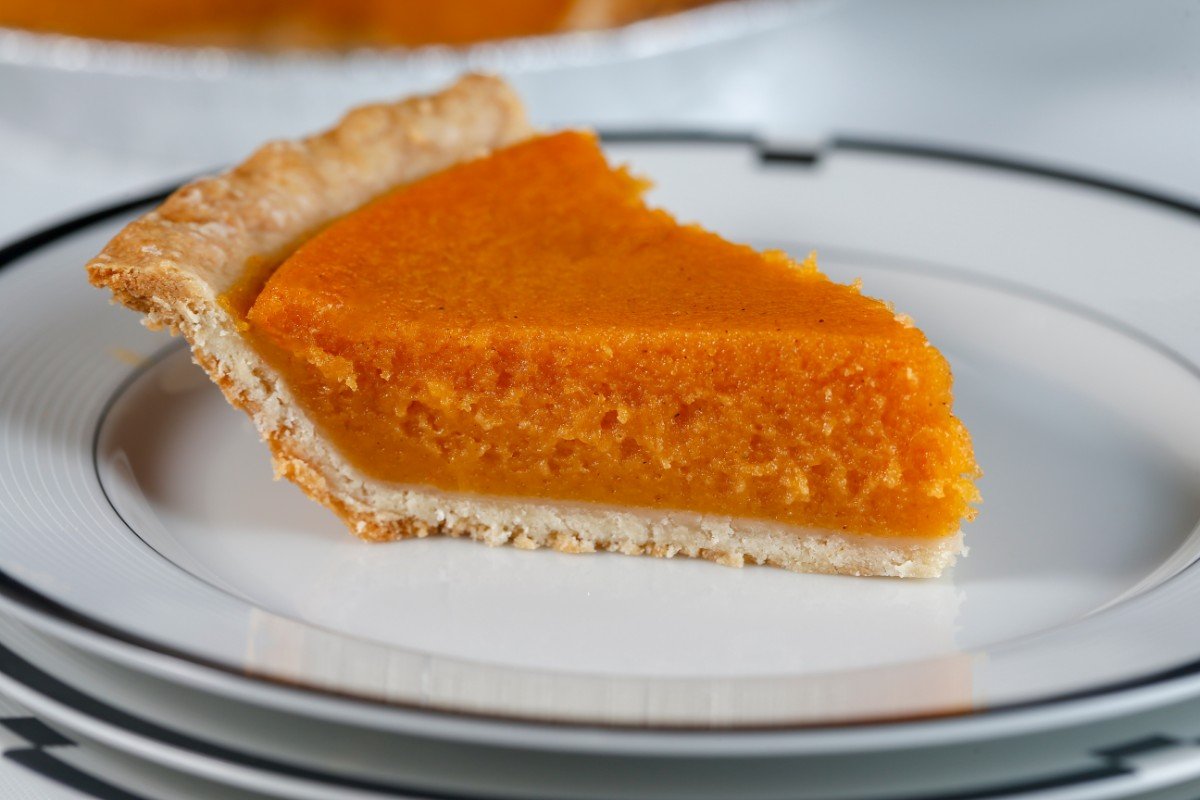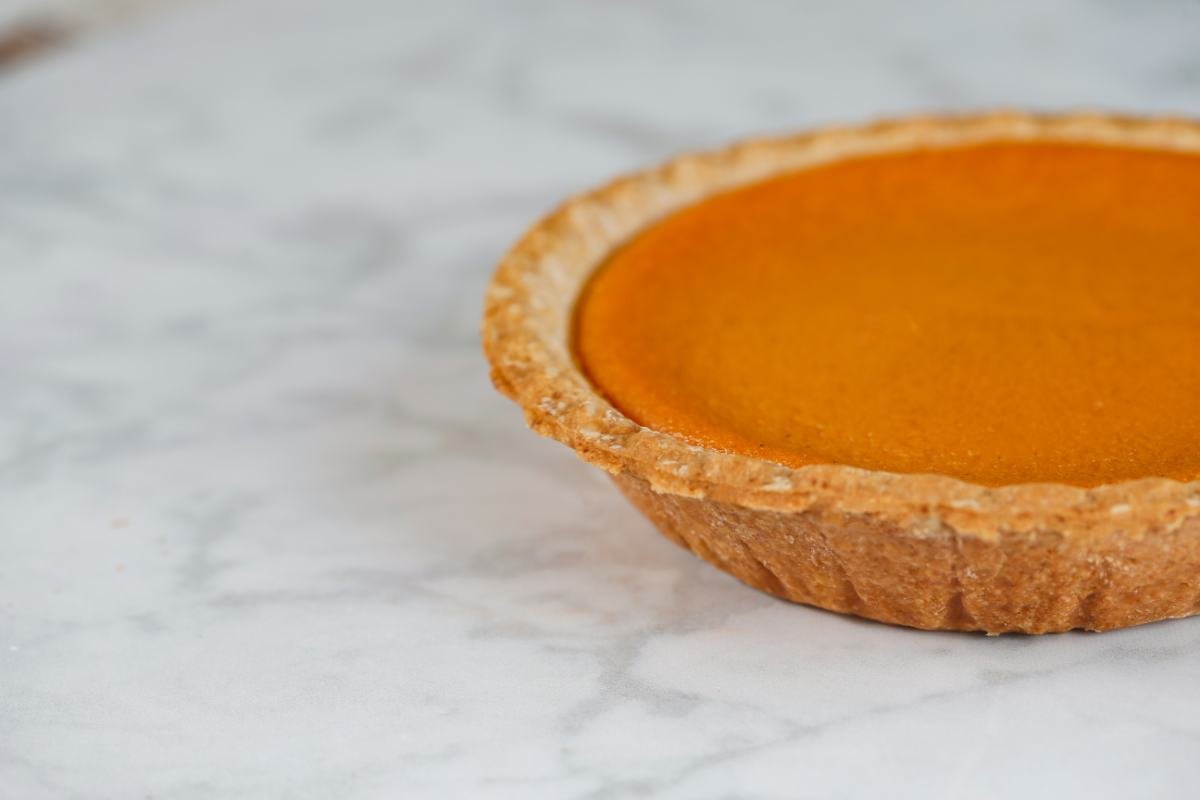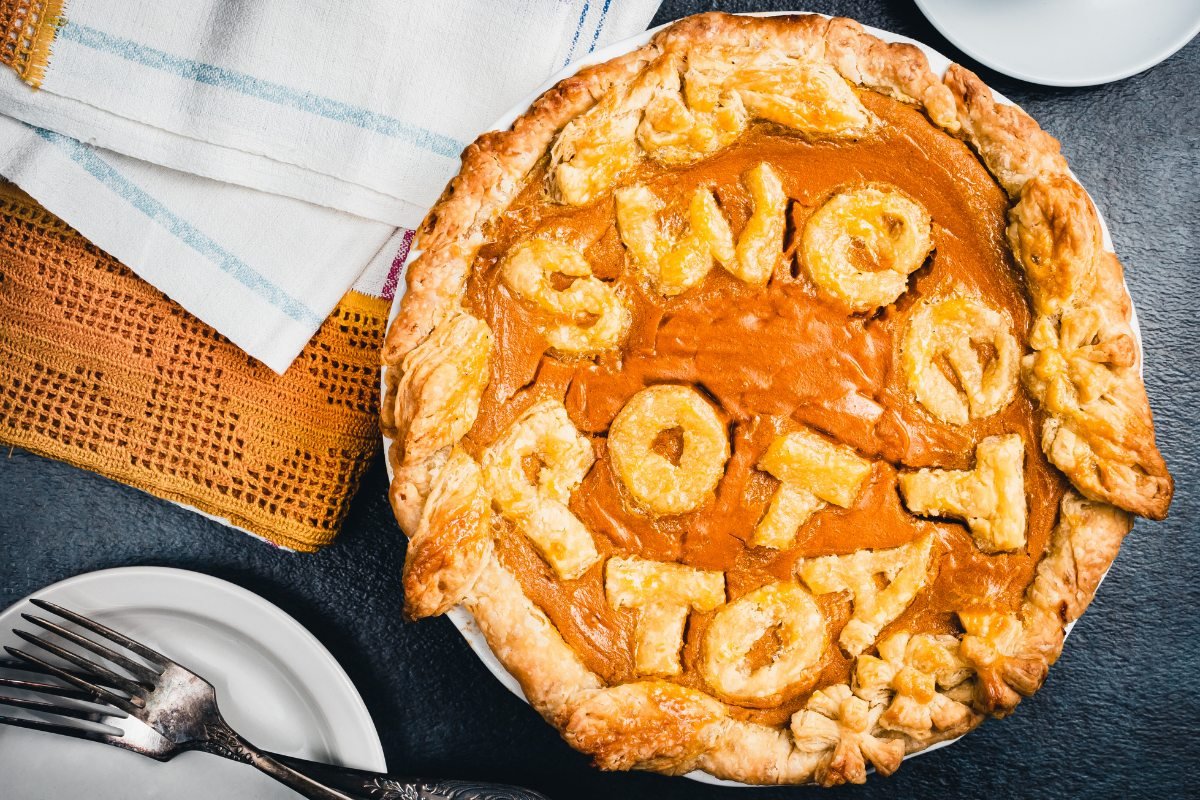Welcome to the delightful world of sweet potato pie, a dish that wraps you in the warmth of home cooking, tradition, and the joy of sharing with loved ones. The roots of sweet potato pie run deep and complex, tracing back to culinary traditions across continents and cultures. Often linked with the cuisine of the Southern United States, this dessert has woven its way into the fabric of American holiday meals, especially Thanksgiving and Christmas. Yet, its appeal knows no borders, enchanting palates universally.
Unlike other pies, sweet potato pie offers a unique blend of sweet and earthy flavors. The natural sweetness of sweet potatoes, enhanced with spices like cinnamon, nutmeg, and vanilla, results in a smooth, creamy filling that sits perfectly within a flaky, buttery crust. This dessert strikes a perfect balance between comfort and luxury.
In this blog, we invite you on a comprehensive journey through everything sweet potato pie – from its storied history and cultural significance to a step-by-step guide for creating your own pie masterpiece at home. Whether you’re a seasoned baker or new to the culinary arts, this post aims to inspire and guide you in making a sweet potato pie that will impress and delight. Let’s embark on this culinary adventure together and unlock the magic of sweet potato pie.
Now, let’s delve into the rich history of sweet potato pie, exploring its origins and how it became a cherished dessert around the world.
The History of Sweet Potato Pie

Sweet potato pie’s journey is a fascinating tale of migration, adaptation, and celebration. This section delves into its rich history, tracing the roots from early civilizations to its cherished place in modern-day festivities. By understanding its origins, we grasp not just a recipe, but a cultural artifact that has evolved and been embraced by diverse communities.
Origins and Early Adaptations
The story of sweet potato pie begins with the sweet potato itself, a tuber native to the Americas. Indigenous peoples of Central and South America cultivated sweet potatoes long before European explorers arrived. When Europeans did make contact in the 15th and 16th centuries, they were introduced to this new crop, which they then carried back across the Atlantic.
In Africa, sweet potatoes quickly adapted to the climate and became a staple food. African cooks began to incorporate sweet potatoes into their cuisine, creating dishes that blended traditional African cooking methods with this new ingredient. When enslaved Africans were brought to the Americas, they brought with them their culinary traditions, including dishes that would lay the groundwork for sweet potato pie.
Sweet Potato Pie in American Culture
In the American South, sweet potato pie took on a new identity. It became a symbol of resilience and creativity among enslaved African Americans, who often had limited ingredients for cooking. They transformed the simple sweet potato into a rich, flavorful pie that could be shared during gatherings and celebrations, infusing it with spices and flavors that turned it into a beloved dessert.
As African American culture spread throughout the United States, so did the popularity of sweet potato pie. It became a fixture in Southern cooking and an essential part of Thanksgiving, Christmas, and other holiday meals. Its warmth, sweetness, and rich texture made it a comfort food and a symbol of togetherness and celebration.
Sweet Potato Pie and Cultural Significance
Sweet potato pie is more than just a dessert; it’s a cultural symbol. It represents the blending of traditions and the resilience of those who adapted and thrived in challenging circumstances. For many, sweet potato pie is a link to heritage, a nod to ancestors who innovated and persevered.
The pie also reflects the diverse influences that have shaped American cuisine. It’s a testament to the ways food can bring people together, crossing cultural boundaries and creating shared experiences. Sweet potato pie embodies the idea that culinary traditions can evolve and integrate, giving rise to new expressions of culture and community.
Modern-Day Celebrations and Innovations
Today, sweet potato pie continues to evolve, with chefs and home cooks alike experimenting with new ingredients and techniques. From the addition of marshmallow toppings to incorporating bourbon or maple syrup into the filling, these innovations keep the tradition alive and vibrant. Yet, at its core, sweet potato pie remains a simple, hearty dish that speaks to the soul.
The pie’s popularity has also transcended regional boundaries, becoming a cherished dessert well beyond the American South. It’s a testament to the enduring appeal of sweet potato pie and its ability to adapt and flourish in new contexts.
Why Sweet Potato Pie?
Sweet potato pie isn’t just a dessert; it’s a nourishing slice of history and culture. Beyond its delectable flavor, this pie holds significant nutritional benefits, stands out among its culinary peers, and marks its presence in festive traditions. Let’s delve into the reasons why sweet potato pie deserves its revered spot in the kitchen and on the dining table.
Nutritional Benefits: A Healthy Indulgence
Packed with Nutrients: Sweet potatoes, the star ingredient of the pie, are a powerhouse of nutrition. They’re rich in vitamins A and C, both of which are crucial for immune function and skin health. Additionally, sweet potatoes offer a good dose of dietary fiber, supporting digestive health.
Lower Glycemic Index: Compared to other pies that rely heavily on refined sugars and flours, sweet potato pie can be a healthier option when prepared thoughtfully. Sweet potatoes have a lower glycemic index, which means they provide a more gradual increase in blood sugar levels, making it a preferable choice for those managing blood sugar.
Versatility in Healthier Adaptations: The recipe for sweet potato pie allows for creativity in making it healthier. Ingredients can be adjusted to reduce sugar, incorporate whole grains in the crust, or even veganize the entire dish without sacrificing its comforting essence.
A Culinary Standout: Beyond Ordinary Pies
Rich Flavor Profile: What sets sweet potato pie apart is its rich, complex flavor profile. The natural sweetness of sweet potatoes is enhanced with spices like cinnamon, nutmeg, and cloves, offering a taste that’s both comforting and sophisticated.
Texture That Delights: The creamy, smooth filling of sweet potato pie, contrasted with a flaky or crunchy crust, creates a delightful sensory experience. This balance of textures makes it a favorite among pie lovers who appreciate the subtleties of a well-crafted dessert.
Versatility in the Kitchen: Sweet potato pie is not just limited to one traditional recipe. It serves as a canvas for culinary expression, allowing chefs and home cooks to experiment with additions like pecans, marshmallows, or even a splash of bourbon, catering to a wide range of palates and preferences.
Celebratory and Festive Traditions
A Symbol of Gathering: Sweet potato pie is more than a dessert; it’s a symbol of community and celebration. It’s often at the center of holiday gatherings, bringing together friends and family to share in the joy of the season.
Historical and Cultural Significance: This pie carries with it a sense of tradition and history, particularly within African American communities. It’s a dish that tells stories of resilience, creativity, and the blending of cultures, making it a meaningful part of celebratory feasts.
Seasonal Celebrations: Though sweet potato pie is a year-round favorite, its popularity peaks during the fall and winter months. This timing aligns with the harvest of sweet potatoes and the festive season, making it a staple for Thanksgiving, Christmas, and other holiday celebrations.
Preparation Before Cooking: Laying the Groundwork for Sweet Potato Pie
Before we dive into the actual cooking, preparing to make sweet potato pie involves a few key steps. Selecting the right ingredients, ensuring you have the necessary tools, and understanding the process set the stage for a successful and delicious pie. Here’s how to get everything in order for your culinary masterpiece.
Choosing the Right Sweet Potatoes
Opt for Fresh, Firm Sweet Potatoes: The foundation of a great sweet potato pie is, unsurprisingly, the sweet potatoes themselves. Look for sweet potatoes that are firm to the touch without any soft spots or blemishes. Freshness is key, as it directly impacts the pie’s flavor and texture.
Variety Matters: While there are many types of sweet potatoes, choosing the right variety can enhance your pie. Orange-fleshed sweet potatoes are commonly used for their sweet flavor and creamy texture, perfect for a smooth pie filling.
Size and Uniformity: Selecting sweet potatoes that are uniform in size helps them cook evenly, ensuring that each piece is perfectly tender for mashing.
Gathering Essential Ingredients
Spices and Flavorings: The right blend of spices can elevate your sweet potato pie from good to unforgettable. Essential spices include cinnamon, nutmeg, and ginger, which complement the sweetness of the potatoes. Don’t forget pure vanilla extract for that warm, aromatic touch.
Quality Matters: When it comes to ingredients like milk, eggs, and butter, opt for the best quality you can afford. Fresh, high-quality ingredients contribute to the pie’s overall flavor and richness.
Sweetness Options: While sugar is traditional, consider alternatives like maple syrup or honey for a more nuanced sweetness. Adjust quantities to taste, keeping in mind the natural sweetness of your sweet potatoes.
Essential Tools for the Perfect Pie
Reliable Oven: A well-calibrated oven ensures that your pie bakes evenly, achieving that perfect balance of a crispy crust and a soft, creamy filling.
Blender or Food Processor: For a silky-smooth filling, a blender or food processor is indispensable. It helps blend the sweet potatoes and other ingredients into a uniform, lump-free mixture.
Pie Dish and Baking Tools: A good-quality pie dish distributes heat evenly, while baking tools like mixing bowls, a rolling pin (for homemade crusts), and measuring spoons and cups are crucial for accuracy in your recipe.
Thermometer (Optional): For those who want to ensure their pie is baked to perfection, a kitchen thermometer can check the filling’s doneness without guesswork.
Step-by-Step Sweet Potato Pie Recipe

Crafting a sweet potato pie from scratch is a rewarding culinary adventure that combines simplicity with a touch of artistry. This step-by-step guide will walk you through creating a pie that’s bound to impress, from the flaky crust to the rich, spiced filling. Here’s how to bring this beloved dessert to life in your kitchen.
Preparing the Sweet Potatoes
Boil or Bake for Perfection: Start by cooking the sweet potatoes until they’re tender and easily pierced with a fork. You can either boil them for about 20 minutes or bake them in a 375°F oven for about an hour. Baking concentrates the sweet potatoes’ natural sugars, enhancing the pie’s flavor.
Cool and Peel: Once cooked, let the sweet potatoes cool until they’re manageable to handle. Then, gently peel off the skins. The skins should come away easily if the potatoes are fully cooked.
Mash Smoothly: Mash the sweet potatoes in a bowl until smooth. For an even silkier texture, pass them through a sieve or blend them briefly. You’ll need about 2 cups of mashed sweet potatoes for the pie filling.
Crafting the Perfect Crust
Choose Your Path: For the crust, you can either use a store-bought pie shell or make your own. If making from scratch, mix 1 1/4 cups of all-purpose flour with a pinch of salt, cut in 1/2 cup of cold butter until the mixture resembles coarse crumbs, and then gently stir in ice water until a dough forms.
Roll and Fit: On a lightly floured surface, roll out the dough into a 12-inch circle. Carefully place it into a 9-inch pie dish, trimming any excess dough from the edges and crimping for a decorative finish.
Pre-Bake (Optional): For a crisper crust, consider pre-baking the shell at 375°F for 8 minutes. This step is optional but can prevent a soggy bottom.
Mixing the Filling
Combine Ingredients: In a large bowl, whisk together the mashed sweet potatoes, 3/4 cup of sugar (adjust to taste), 1/2 cup of milk, 2 beaten eggs, 1/4 cup of melted butter, 1 teaspoon of vanilla extract, and spices (1 teaspoon of ground cinnamon, 1/2 teaspoon of ground nutmeg, and a pinch of ground cloves).
Ensure Evenness: Mix the ingredients until well combined and smooth. This is your moment to adjust spices or sweetness according to your preference.
Baking the Pie
Fill and Smooth: Pour the filling into the prepared pie crust, smoothing the top with a spatula.
Bake to Perfection: Bake the pie in a preheated oven at 350°F for about 50-60 minutes, or until the filling is set and the crust is golden brown. The pie should still jiggle slightly in the center; it will continue to set as it cools.
Cool Completely: Allow the pie to cool on a wire rack for at least 2 hours. This patience is crucial, as it lets the filling firm up and flavors meld together beautifully.
Serving and Enjoying
Serve at Room Temperature or Chilled: Sweet potato pie can be enjoyed at room temperature or chilled. Slice and serve as is, or with a dollop of whipped cream for an extra indulgent touch.
Garnish with a Sprinkle: A light dusting of cinnamon or grated nutmeg on top of the pie or the whipped cream adds a finishing touch that’s as beautiful as it is delicious.
Serving Suggestions for Sweet Potato Pie
Once your sweet potato pie has baked to perfection, cooled, and is ready to serve, the next step is to present it in a way that enhances its flavors and delights your guests. Serving sweet potato pie isn’t just about slicing it up; it’s an opportunity to elevate the experience through thoughtful pairings, garnishes, and presentation techniques. Let’s explore how to serve sweet potato pie in style.
Perfect Pairings: Complementing Flavors
Whipped Cream: A dollop of freshly whipped cream on top of each pie slice adds a light, creamy texture that contrasts beautifully with the dense, rich filling. For an extra touch, infuse the cream with vanilla or a splash of bourbon.
Ice Cream: A scoop of vanilla ice cream melting alongside a warm slice of sweet potato pie is a classic pairing. The cool sweetness of the ice cream melds with the warm spices of the pie, creating a delightful sensory experience.
Hot Beverages: Serve your sweet potato pie with hot beverages like coffee, tea, or spiced cider. The warmth of the drink complements the cozy spices in the pie, enhancing the overall tasting experience.
Creative Garnishes: Adding a Touch of Elegance
Toasted Pecans: Sprinkle toasted pecans on top of the pie or around each slice for a crunchy contrast. The nuttiness of the pecans pairs well with the sweet, earthy flavors of the pie.
Caramel Drizzle: A light drizzle of caramel sauce over each slice adds a glossy, sweet finish that makes the pie even more irresistible. Consider using a salted caramel for an intriguing sweet-salty balance.
Citrus Zest: For a hint of brightness, grate a little orange or lemon zest over the pie. This adds a fresh aroma and a slight tanginess that cuts through the sweetness.
Presentation Tips: Making It Picture-Perfect
Slicing: Use a sharp, thin-bladed knife to cut clean slices. For the neatest presentation, dip the knife in hot water and wipe it dry between cuts.
Individual Plates: Serve each slice on individual plates with a bit of artistic flair. A swoosh of caramel or a sprinkle of powdered sugar on the plate before adding the slice can turn a simple serving into a work of art.
Decorative Toppings: Arrange your garnishes with care, whether it’s a precise dollop of whipped cream or an artful scattering of nuts and zest. The goal is to make each slice look inviting and irresistible.
Storage Tips for Sweet Potato Pie
Proper storage is crucial for maintaining the freshness and flavor of your sweet potato pie, whether you’re looking to enjoy leftovers or prepare the pie in advance. Sweet potato pie, with its rich and moist filling, requires careful handling to ensure it remains as delicious as when it was first baked. Follow these storage tips to keep your pie tasting great.
Cooling Before Storage
Let It Cool Completely: Before storing, allow your sweet potato pie to cool to room temperature. Storing the pie while it’s still warm can lead to condensation inside the container, making the crust soggy and potentially fostering bacterial growth.
Refrigerating Your Pie
Use an Airtight Container: Once cooled, place your sweet potato pie in an airtight container to prevent it from absorbing odors from the refrigerator and to keep it moist.
Refrigerate Promptly: Sweet potato pie should be refrigerated within two hours of baking to ensure it stays fresh and safe to eat. The pie will keep in the refrigerator for 3 to 4 days.
Freezing for Long-Term Storage
Wrap It Well: If you need to store the pie for an extended period, freezing is a viable option. Wrap the pie tightly in plastic wrap, then again in aluminum foil to protect it from freezer burn and flavor transfer.
Label and Date: Always label your frozen pie with the date of freezing. Sweet potato pie can be frozen for up to two months without significant loss of quality. Remember to thaw it in the refrigerator overnight before serving.
Thawing and Reheating
Thaw Safely: When you’re ready to enjoy your frozen sweet potato pie, transfer it from the freezer to the refrigerator to thaw gradually. This ensures the pie maintains its texture and taste.
Reheating (Optional): If you prefer your sweet potato pie warm, reheat it gently in the oven at 350°F (175°C) for about 15-20 minutes or until warmed through. Avoid using the microwave, as it can make the crust soggy.
Conclusion
By following these storage tips, you can extend the life of your sweet potato pie, ensuring it remains as enjoyable as the day it was made. Proper cooling, refrigerating, and freezing practices keep your pie fresh and delicious, ready for you to savor each bite, whether it’s enjoyed immediately after baking or saved for later. Sweet potato pie’s enduring appeal is not just in its taste but also in its ability to bring comfort and joy, even days after it has been prepared.
With the right care, your sweet potato pie can continue to delight well beyond its initial serving, making it a gift that keeps on giving.
Frequently Asked Questions About Sweet Potato Pie
Sweet potato pie, with its rich history, nutritional benefits, and delicious flavor, often sparks curiosity and questions, especially among those trying to perfect their recipe or explore this dish for the first time. Here, we address some of the most commonly asked questions about sweet potato pie, providing insights and tips to enhance your baking experience.
Can I Use Canned Sweet Potatoes Instead of Fresh?
The Short Answer: Yes, But Consider the Differences: You can use canned sweet potatoes for convenience, but keep in mind that they may already be sweetened and softer than fresh sweet potatoes. Adjust the sugar in your recipe accordingly, and expect a slightly different texture in the pie filling.
How Do I Make My Sweet Potato Pie Filling Smooth?
Achieve Smoothness with Proper Blending: For a silky-smooth filling, thoroughly mash or puree the cooked sweet potatoes. Using a blender, food processor, or hand mixer can help eliminate lumps. Strain the puree through a fine-mesh sieve for an extra smooth texture if desired.
Why Did My Sweet Potato Pie Crack?
Temperature Changes Can Cause Cracks: Cracks in sweet potato pie usually result from temperature changes. To prevent this, avoid overbaking, and cool the pie gradually in the oven with the door ajar. A water bath during baking can also help maintain even moisture levels, reducing the risk of cracking.
Can Sweet Potato Pie Be Made Gluten-Free?
Gluten-Free Options Are Available: Absolutely! To make a gluten-free sweet potato pie, use a gluten-free pie crust and ensure all other ingredients, like spices and extracts, are gluten-free. Many stores offer gluten-free crusts, or you can make your own with gluten-free flour blends.
Is Sweet Potato Pie Suitable for Vegans?
Vegan Variations Are Delicious: Yes, sweet potato pie can be adapted for a vegan diet. Substitute the eggs with flaxseed meal or a commercial egg replacer, and use plant-based milk and butter. Look for a vegan pie crust, or make your own using vegan-friendly ingredients.
How Can I Add a Unique Twist to My Sweet Potato Pie?
Experiment with Flavors and Toppings: Personalize your sweet potato pie by adding ingredients like bourbon, orange zest, or pecans to the filling. Toppings such as marshmallow fluff, meringue, or a crumble topping can also add texture and flavor interest.
Conclusion
We’ve journeyed through the rich world of sweet potato pie together, uncovering its deep history, exploring its nutritional benefits, and mastering the craft of making this cherished dessert. From choosing the finest ingredients to achieving the smoothest filling, and navigating common questions, our guide aims to empower you to bake a sweet potato pie that delights both in flavor and tradition.
Whether you’re an experienced baker or just starting out, remember that the joy of baking sweet potato pie lies not only in the delicious outcome but also in the process itself. We encourage you to continue experimenting, adjusting, and enjoying every step of your baking journey.
For more delicious recipes and culinary inspiration, make sure to visit RecipesZap. This destination offers a vast array of flavors to inspire your next kitchen adventure.
And if you wish to dive deeper into the wonderful world of sweet potatoes and their culinary uses, check out the Sweet Potato Council’s website. It offers extensive information on nutritional benefits and creative recipes.
Thank you for embarking on this flavorful exploration with us. May your sweet potato pies fill your home with warmth, joy, and a rich sense of tradition. Here’s to many more happy baking moments!

